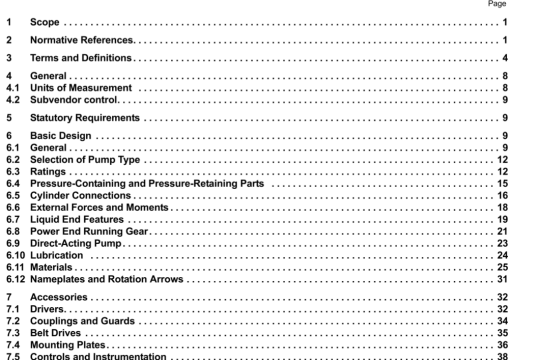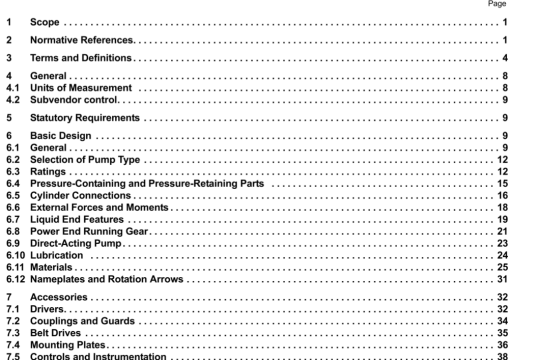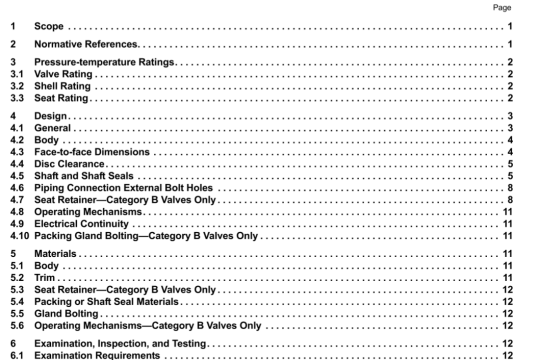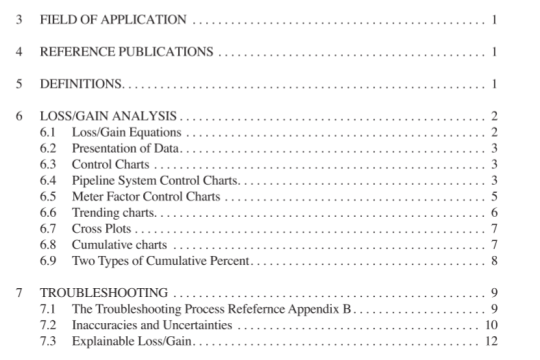API RP 51:2001(2013) pdf download
API RP 51:2001(2013) pdf download.Onshore Oil and Gas Production Practices for Protection of the Environment.
6.1.7 Stormwater Runoff
Natural drainage patterns of the area should he considered in the location of equipment, pads. and pits so that storrnwater runotf does not create an environmental hazard by erosion of base material, which could lead to equipment instability. or by flooding of pits, which could cause a discharge of oil or other fluids into the local surface waters.
I)ischarges of storrnwater from inside exploration and production facilities such as hermed areas around tank batteries (including oil and gas exploration, production, processing, or treatment operations or a transmission facility), which can reach waters of the United States, require a stormwater discharge permit and submittal of a stormwater pollution plan to the EPA. Contamination includes storm- water that comes into contact with any overburden, raw materials, or waste products on the site.
6.1.8 Blowout Prevention Equipment
All blowout prevention equipment (BOPE) should be selected, installed, and properly maintained in order to prevent uncontrolled releases to the environment. Refer to API
RP53.
All HOPE should have a working pressure rating that exceeds the maximum expected surface pressure.
Training exercises or drills should be held as necessary to ensure crew familiarity and that the HOPE is in good working order.
6.1.9 Control of Noise and Other Nuisances
Engines and prtxluction equipment should be provided with noise abatement measures. if appropriate, to reduce noise levels to the extent practical, considering the local envimoment. Other nuisances such as odors and dust should be controlled as considered appropriate for the location. Consideration should be given to minimizing traffic in general. partic ularly in or near urban areas.
6.1.10 Solids Removal or Capture
All produced fluids, drill cuttings. ccment. cement returns. NORM scale, and other solids should be captured and classified, then reused, recycled, or disposed. Hazardous waste should be segregated in order to prevent contamination of nonha,ardous materials.
6.2 WELL OPERATiONS
6.2.1 EquIpment Operation and Maintenance
All well producing equipment should be kept neat, clean, painted and in good working order. Equipment should be painted to blend into the sumundings. if required or appro— priate and kept clean to present an acceptable appearance.
Selected moving equipment may be painted different colors to enhance visibility.
Safety guards necessary to protect humans, livestock, wildlife, and promote public safety should be maintained around equipment. Rcfcr to API RP I I ER for information on guarding of pumping units. Equipment lockoutliagout procedures should also be developed and implemented.
Drip pans should be provided under equipment and storage containers potentially subject to minor leaks. These drip pans should be monitored on a routine basis to recover and recycle or dispose of accumulated oil and other liquids.
Bulk storage, recyclable, and reusable containers should be considered in order to reduce the number of containers that must be maintained and disposed. All reusable containers should be well marked to denote contents and the ftict that they are to be reused.
The installation or use of double stuffing boxes, leak detectors, and shutdown devices should be considered in areas of particular environmental sensitivity.
Well cellars should be kept clean. dry. and guarded to prevent accidental falls. Well cellars should be filled if they may fill with sour gas and present a sakty hazard to people.
6.2.2 Metallurgy and Corrosion
All equipment should be manufactured from materials which are suitable for the environment in which they are to operate. NACE Standard Mk0l75 and NACE RP0475 should be consulted for more infonnation.
Equipment operating in known corrosive conditions should be inspected on a routine basis for signs of corrosion, with corrective action taken, as needed, to assure the equipment continues to operate in an environmentally acceptable manner.
If well production or injection conditions change in terms of hydrogen sulfide or carbon dioxide content, pressure, water cut, or any other parameter, the metallurgy of the well equipment should be reassessed to assure its suitability for the ness conditions.




